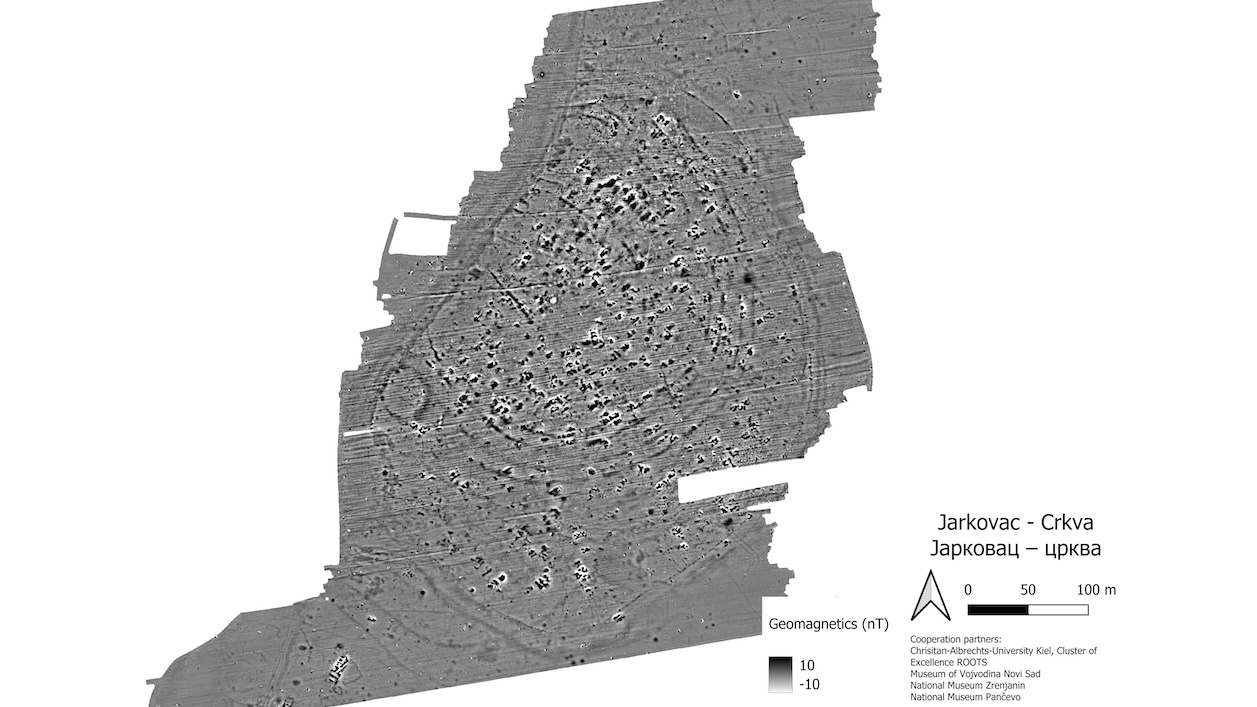Remains of vast 7,000-year-old farming settlement found in a 'huge void' in Serbia
Archaeologists discovered a previously unknown Neolithic settlement in Serbia and then fully mapped the "exceptional" site.

Going off a local tip, archaeologists searching in a remote area of Serbia have discovered and fully mapped the remains of a vast 7,000-year-old settlement, experts told Live Science.
Located near Jarkovac, a village in northern Serbia, the Neolithic settlement covers approximately 32 acres (13 hectares) — about the area of 24 football fields — and is surrounded by several ditches, according to a statement from Kiel University.
Although the researchers were aware of other similar sites in the region, this one came as a surprise.
"We went to the site just by the hint of a local guy who said there might be something there, and then we found this reasonably large site in the middle of nowhere," Fynn Wilkes, co-team leader and a doctoral student at the Institute of Prehistoric and Protohistoric Archaeology at Kiel University in Germany, told Live Science. "We found this exceptional structure that was a huge settlement for that area and for that time period."
Radiocarbon dating of materials in the soil revealed that the site dates to between 5400 and 4400 B.C. and was likely occupied by the Vinča culture, which existed in southeastern Europe during that time, according to the statement.
Related: Satellites spy remnants of hidden Bronze Age settlement in Serbia
This group was one of the "first sedentary farming communities" in the region and would have farmed and raised goats, cattle and other livestock, Wilkes said.
Sign up for the Live Science daily newsletter now
Get the world’s most fascinating discoveries delivered straight to your inbox.
Researchers found the remnants of a "large number" of burnt houses, as well as numerous artifacts, which together gave a "clear idea of the structure of the site 7,000 years ago," according to the statement. Those artifacts included vessels and "fine pieces of reddish painted pottery," all of which were found at the surface level of the site, Wilkes said.
"This discovery is of outstanding importance, as hardly any larger Late Neolithic settlements are known in the Serbian Banat region," Martin Furholt, team leader and a professor of prehistoric and social archaeology at the Institute of Prehistoric and Protohistoric Archaeology at Kiel University, said in the statement.
However, the biggest surprise for the researchers was that the site had gone unnoticed for so long.
"We see this huge gap between known settlements that are located closer to rivers and mountains, and then suddenly you have this huge void in the middle of the plains," Wilkes said. "Now we can prove that there is something in the middle."
The researchers plan to conduct further excavations to get a better sense of whether there were any connections between this site and others in the region.
Jennifer Nalewicki is former Live Science staff writer and Salt Lake City-based journalist whose work has been featured in The New York Times, Smithsonian Magazine, Scientific American, Popular Mechanics and more. She covers several science topics from planet Earth to paleontology and archaeology to health and culture. Prior to freelancing, Jennifer held an Editor role at Time Inc. Jennifer has a bachelor's degree in Journalism from The University of Texas at Austin.









